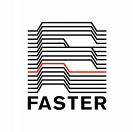
How to Accelerate Your New Product Processes in 5 Easy Steps.
Believe it or not, you don’t have to employ a £2000 an hour management consultant to reengineer you new product processes to get faster to market.
Here’s 5 things you can 'begin' do this quarter to get significant gains without upsetting the apple cart (to much).
Eliminate Bottlenecks: Where’s the number 1 bottleneck in your process? Obviously, look for the longest job queue. The reason for such a tailback is that there’s a linear and quite often single sub-process on the critical path to cope with a multitude of sub-projects waiting in series (e.g: one piece of major test kit, or lone mould M/C, etc). The solution? Multiply into a number of smaller pieces of kit, so that each project or sub-process can take place in parallel.
Reduce the number of projects by a half: This is about ‘results over time.’ Although there are less projects being worked on at any one time, the focus enables more projects to hit the market in much less time. The other issue here is what’s known as the ‘Bird Cage Effect.’ If there’s a heavy load of projects, the weaker projects (less perceived value or status of the engineer) will fall to the bottom of the cage. Half the number of projects and watch productivity boom.
Work a on small number of sub-systems at a time: Furthermore, working on a umpteen projects simultaneously will increase aggregate complexity. The danger here, is that this seemingly flexible approach is very wasteful and misleading. Why?… 2 reasons: First it causes so-called ‘Organisational Entropy.’ A multitude of people working on multiple projects, attacking several issues, sets up high and unnecessary levels of turbulence. Second - and as a result of the first - is something called the ‘Wait-State Trap.’ An endless string of stop/go situations. And a project on stop, is project on stop. Take all the wait-states situations and total organisational entropy, and it ends up in gross project time delays. The secret? Work on a small number of sub-system projects at a time, bring them up to specification, then move on to the next. In the long run, it’s is faster and more efficient.
Reduce the size of the team: Large organisations cause their own problems. We know that. Furthermore, product innovation is not a linear process, like counting the number of books in a library. Here, for every agent added (people counting the books) the faster the books are counted. However, product innovation is an acutely uncertain and highly interactive process. Where for every agent added, so the number of communication passes there are, in turn slowing the proces, that it was intended to speed up. QED: Small team are faster, more nimble, and efficient.
Give senior engineers multiple hats (but train in the skills): I know a very major hand tool OEM where senior engineers are designers, engineers, prototypers, testers, marketers and customer supporters all at one and the same time! And here’s the test. Have you seen the raft of innovative tools in the shops of late? Go look, you'll be surprised.
No comments:
Post a Comment